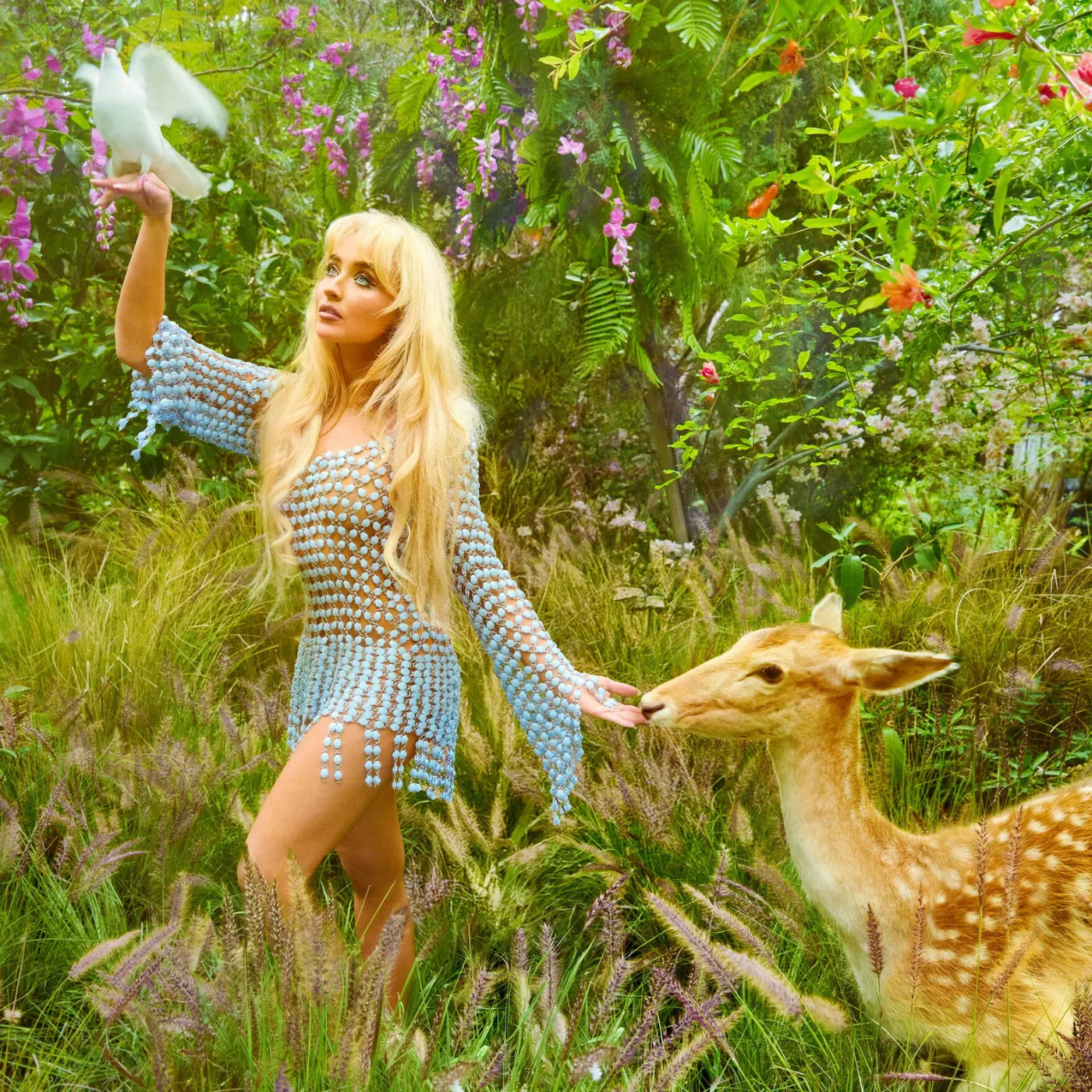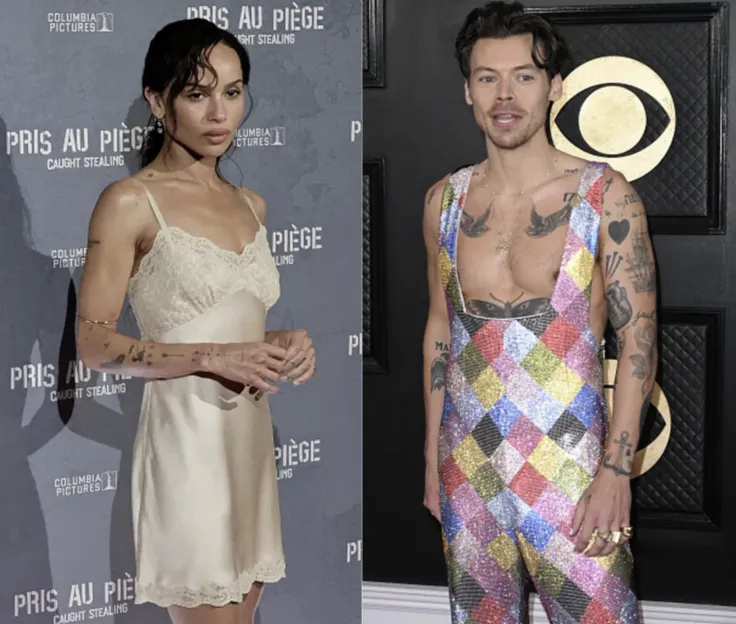

Sabrina Carpenter Shatters the Illusion of Empowerment: “It’s Not Girl Power, It’s Survival Mode”
Sabrina Carpenter just sent shockwaves through the entertainment world with the surprise announcement of her upcoming album, Man’s Best Friend, set to drop on August 29th. But the pop star’s unplanned release wasn’t the only thing fans and critics are talking about—the controversy surrounding the album’s cover art has ignited a fiery conversation across social platforms, generating intense curiosity, divided opinions, and speculation about what it all really means.

“This One Felt Like Riding a Bike”
In a heartfelt and unusually candid mailing list message, Sabrina Carpenter shared the deeply personal origins of this new project. According to her, she never intended to release a new record this year, but when inspiration struck, she ran with it—or more accurately, she rode with it.
“This one felt like riding a bike,” Sabrina wrote. “I tried not to overthink the process this time… Every inch came together so effortlessly. Different from my previous projects, where I’d bang my head to crack numerous codes.”
What’s striking about her words is not just the admission of past creative struggle, but how open she is about letting life happen and letting that energy shape the music organically. In a world where pop stars often present finished products wrapped in perfection, Sabrina’s raw note reads like a breath of fresh air—or maybe a calculated breath of fresh air.
A Cover That Sparked Outrage
The buzz surrounding Man’s Best Friend quickly shifted focus from its musical content to its controversial cover art. The image shows Sabrina on all fours, her head bowed submissively, with a faceless man gripping her ponytail. The bold, unsettling composition immediately lit up Facebook, Twitter, and TikTok, triggering polarized reactions.
Some fans interpreted the imagery as a statement about power dynamics, industry control, or even the emotional toll of public scrutiny. Others accused the pop star of going too far, calling the image disturbing, misguided, or tone-deaf.
Despite the backlash, there’s no denying the marketing genius behind the move. In an era where controversy drives clicks and virality, Sabrina Carpenter has placed herself squarely in the middle of the cultural conversation.
A Shift in Strategy
The surprise nature of the album, the mailing list announcement, and the minimal pre-release buildup all signal a different kind of rollout—one that values direct connection with fans over traditional media noise. It’s a move many artists have started adopting, but few execute with this much emotional sincerity.
Sabrina’s message paints a picture of an artist at peace with her process: “I went back to some of my favorite artists growing up—Stevie, Dolly, Donna… and was surprised to find many of them put out a new record every year.”
This nostalgic nod to Dolly Parton, Stevie Nicks, and Donna Summer isn’t just about musical influence. It suggests Sabrina sees herself stepping into the long game—a career driven by output and evolution, not just viral singles or one-off hits.
The Internet Reacts—Loudly
The moment Sabrina’s message hit inboxes, the conversation exploded. On Reddit, threads debated the message’s tone—was it genuine or a strategic PR push? On Facebook, fan groups warred over the cover image’s symbolism. Some praised it as bold; others deemed it reckless.
Meanwhile, Twitter dissected every line of her email, with quotes like “I still go to the studio when inspiration doesn’t strike” being used as proof of her grind mentality, while critics pointed to it as industry conditioning disguised as passion.

Is Effortlessness the New Edge?
In recent years, “effortlessness” has become a buzzword in pop culture. Whether it’s fashion, acting, or music, audiences seem drawn to work that feels natural and unforced. Sabrina leans into that vibe heavily here. But some observers question whether this aesthetic of ease is really a shield for more calculated choices.
Regardless, the effect is working. Within 48 hours of the announcement:
Pre-saves on Spotify spiked by 200%
The hashtag #MansBestFriend trended in the U.S. and UK
Multiple think pieces were published dissecting the album art alone
A Love Letter or a Warning?
While the visuals are sparking heat, Sabrina’s message feels like both a love letter and a coded warning—a whispered rebellion against the perfection factory that pop stars are expected to keep fueling.
“I am endlessly grateful to you who is reading this for your trust in me. I can’t wait to share these stories with you.”
The words are simple. But the delivery—soft, direct, and personal—hits differently in an era when pop rollouts often feel like brand partnerships in disguise. It’s a pivot away from spectacle for spectacle’s sake and toward something more intimate. Or so it seems.
And yet, in a culture steeped in digital irony and strategic vulnerability, sincerity is no longer just heartfelt—it’s scrutinized. Fans are trained to decode every line, every soft-focus photo, and every lowercase caption. So when Sabrina Carpenter says this album came together “effortlessly,” it doesn’t just sound aspirational—it invites skepticism.
Can something effortless really carry the emotional weight fans crave? Or is she smartly resetting expectations before delivering something less polished, more introspective, and possibly even intentionally chaotic?
There’s a growing tension here—between the aesthetic of honesty and actual emotional exposure. Sabrina isn’t pretending to be perfect anymore, but she also isn’t burning the whole pop persona down. She’s dancing at the edge of control, and she’s inviting the audience to watch her make the leap.
Her tone—defiant in interviews, self-aware on social media, and confident in the studio—is signaling something most major pop artists fear: she doesn’t need approval to experiment anymore. The feedback loop between what she creates and how it’s received is still there, but it no longer seems to hold the same power over her decisions.
Even the rollout reflects this shift. The teaser content feels intentionally sparse. The visuals are clean, yet jarring. Every outfit, every set, and every camera angle hint at contrast—softness colliding with sharpness. Like she’s saying, “Yes, I’m still playing the game… but I’m changing the rules as I go.”
There’s no longer a clear divide between artist and brand. And Sabrina seems fully aware of that. Her thank-you note to fans doubles as a call to action: trust me enough to let this be different. Whether it’s different good or different jarring—that’s the part no one’s sure of yet.
If “Emails I Can’t Send” was about processing—pain, relationships, expectation—then Man’s Best Friend may be about resistance. Not loud, not angry. Just deliberate. And in today’s hyper-curated climate, deliberate vulnerability is arguably the most radical move of all.
So the question becomes: Is this new chapter a softer armor or an open wound? Or maybe, somehow, both.

What’s Next?
With Man’s Best Friend just weeks away, the full story has yet to unfold. Whether it delivers a cohesive body of work or not, the rollout itself is already a case study in modern pop marketing.
Sabrina Carpenter has made a bold bet: that honesty, risk, and a little visual shock value are enough to cut through a saturated media landscape. So far, it seems to be paying off.
But come August 29th, the real question remains: Will the music be as memorable as the moment?
One thing’s for sure—everyone will be listening.


















